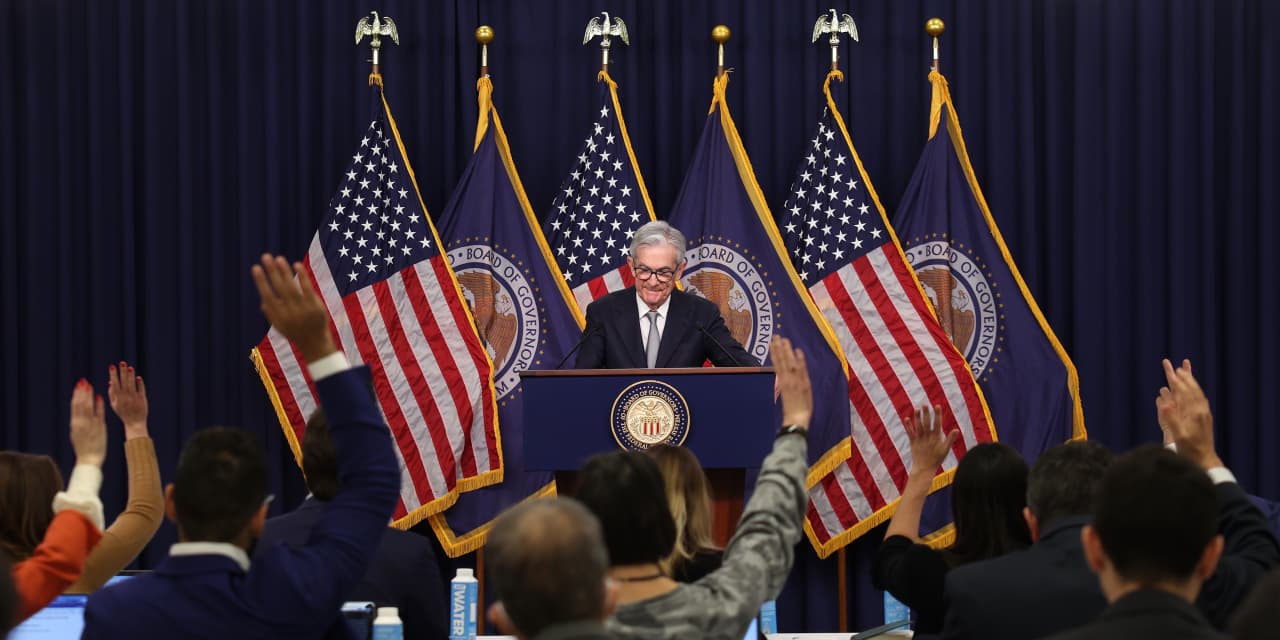Policy makers at the Federal Reserve think they have finished the series of interest-rate increases that began in March 2022, but they’re far from certain.
The minutes from the latest meeting of the Federal Open Market Committee, held Dec. 12-13, said officials acknowledged that rates are likely at their peak for this tightening cycle, but noted that upcoming rate decisions hinge on how the U.S. economy performs in the coming months.
“Participants viewed the policy rate as likely at or near its peak for this tightening cycle, though they noted that the actual policy path will depend on how the economy evolves,” the minutes said.
The minutes, which took a slightly more hawkish tone than Chair Jerome Powell presented in the post-meeting press conference on Dec. 13, noted that almost all officials submitted projections that the federal funds rate would end 2024 lower given the recent disinflation trends.
But at least several members noted that there remains an “unusually elevated degree of uncertainty” and refused to take further rate increases completely off the table.
That emphasis on policy makers’ doubts about the outlook suggests that the expectations for a rate cut in March may “need to be ratcheted down further,” writes Quincy Krosby, chief global strategist for LPL Financial. Interest-rate futures now show a probability of under 65% that rates will be cut then, down from 74% just a week ago, according to the CME FedWatch Tool.
There was no explicit indication from Fed officials when the projected 2024 rate cuts could come. And several members noted that economic conditions may evolve in a way that warrants keeping the target range for the fed-funds rate at its current level of 5.25%-5.50% for longer than even they currently anticipate.
Yet at least some FOMC members are seeing progress, noting they believe that economic data show that the 11 rate hikes the Fed has implemented since March 2022 are having their “intended effect” of slowing consumer demand and cooling the labor market—and will help bring inflation back to the Fed’s 2% target over time.
Members agreed that the tighter financial and credit conditions that households and businesses were experiencing were likely to weigh on economic activity, hiring, and inflation. But the extent of these effects was still “uncertain” at this point, the minutes said.
“Most participants noted that, as indicated in their submissions to the SEP, [the Summary of Economic Projections,] they expected the Committee’s restrictive policy stance to continue to soften household and business spending, helping to promote further reductions in inflation over the next few years,” the minutes say.
Yet while the pace of price growth has slowed, inflation still remains above the Fed’s 2% goal. Given this, at least some Fed officials continue to see a risk that progress toward price stability will stall before the central bank achieves its target.
As Chair Jerome Powell has noted previously, the committee members see the risk of tightening policy too much as coming more into balance relative to the danger of doing too little. A few members pointed out that the Fed potentially could face a “tradeoff” between its dual goals of maintaining price stability and maximum sustainable employment in the months ahead. Several Fed officials noted there is a danger that the labor market could transition from a gradual easing to a more abrupt weakening.
At least a few Fed policy makers also highlighted that a restrictive monetary-policy stance could also present risks to the wider economy, particularly given the current level of uncertainty around how long rates will need to remain high.
Separately, the minutes confirmed that market watchers were correct in interpreting the use of the word “any” in the Fed’s December statement—the bank referred to “the extent of any additional policy firming”—as a signal that the bank likely had finished raising rates.
The minutes say committee members believed that adding the word would relay their judgment that the fed-funds rate was likely “now at or near its peak for this policy tightening cycle, while leaving open the possibility of further increases in the target range if these were warranted by the totality of the incoming data, the evolving outlook, and the balance of risks,” the minutes said.
Write to Megan Leonhardt at [email protected]
Read the full article here




